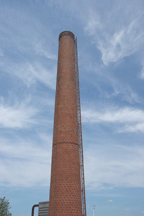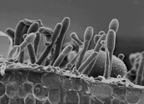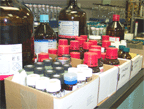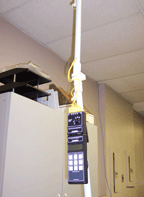








The quality of indoor air is generally affected by three components. The first is outside air quality which varies greatly with season, weather and location. The second is the indoor environment and the human activity that takes place within the building envelope. The third component is the method and effectiveness of ventilation. OSB Services specializes in air quality testing and assessment with a view to defining problems and offering reasonable solutions. Often, indoor air quality and internal sources are not the main issue but the surrounding environment which will contain emission sources that can degrade the air quality. The services offered are integrated with site sampling and laboratory testing, which together are considered one component or protocol.
Lab
-VOC Analytical
Methods
-Chain of Custody
OSB
Services/OSB Lab
2759 Thamesgate
Dr.
Mississauga, Ontario
Canada L4T 1G5
Phone: 905 677 0022
Fax: 905 677 0029
OSB Services has
gained considerable industrial experience which enables it to identify
sources of air contamination in environmental samples collected in any
location and circumstance. OSB Lab specializes in VOC testing using
gas chromatography and is capable of resolving multiple input sources through
forensic pattern analysis and recognition.
Air Quality Test Parameters
Carbon
Dioxide is a
good indicator of sufficient fresh air supply. Indoor Carbon Dioxide levels
are associated with the number of people occupying an area and related to
each individual's metabolic activity as well as the ventilation rate in the
area. Carbon Dioxide levels in an indoor office environment are generally
not high enough to be a health issue, however, elevated levels can indicate
inadequate fresh air ventilation and the accumulation of other indoor
contaminants.

osblab@osbservices.com
osb@osbservices.com
Created by Aga
Carbon Monoxide
is a good indicator of intrusion of combustion source exhausts. Most
problems are associated with furnace/boiler or automobile/propane lift
truck exhausts. Carbon monoxide is extremely toxic. At elevated
levels, symptoms of exposure include headaches, decreased alertness,
nausea, fatigue and chest pains.
Temperature and Relative Humidity
are often the primary causes of air quality complaints. Low relative
humidity levels are associated with discomfort and dryness of mucous
membranes and skin. Temperature, relative humidity, air motion,
activity level and clothing are all factors affecting the thermal
comfort of a person.




|
Particulates and
Airborne Dust
at moderate to high levels can cause allergic reactions, such as dry
eyes, nose, throat and skin irritation, coughing, sneezing and
respiratory difficulties. The particles that are responsible for most
of the adverse health effects are 10 micron or smaller in diameter and
are classified as respirable suspended particulates. Respirable
particulates are measured by high efficiency filtration and particle
counting instrumentation (Met One Laser Particle Counter).
Air
Quality Assessment |
| ▫TOP |